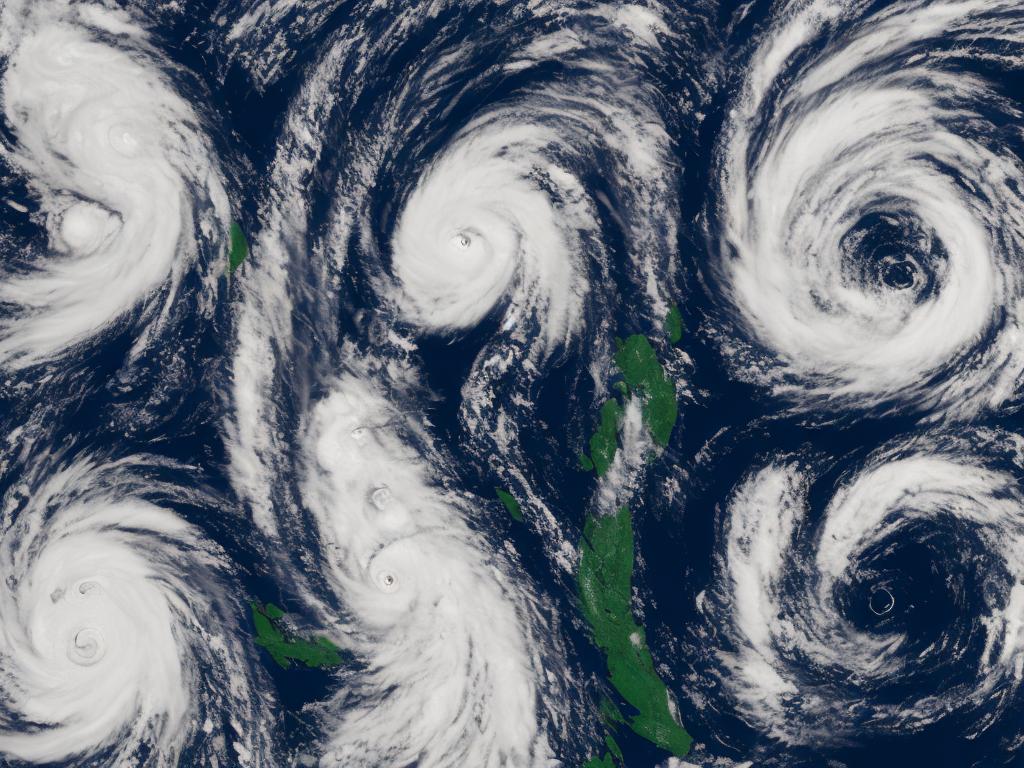
When it comes to natural disasters, two terms often come up in conversation: typhoon and hurricane. While they both refer to powerful storms, they are not interchangeable terms. The key differences between typhoons and hurricanes lie in their location and the name of the storm system. In this article, we will explore these differences to better understand these dangerous weather phenomena.
Typhoons and hurricanes are both tropical cyclones, which are powerful rotating storms that form over warm tropical waters. They are fueled by the evaporation of warm ocean water and are characterized by strong winds, heavy rains, and storm surges that can cause massive damage and loss of life. In the Northern Hemisphere, they are called hurricanes, while in the Western Pacific, they are known as typhoons.
Location
One of the primary difference between typhoons and hurricanes is their location. Typhoons occur in the Western Pacific, while hurricanes are found in the Atlantic and Northeast Pacific Oceans. The dividing line between the two is the International Date Line, which separates one calendar day from the next. Thus, a tropical cyclone that forms east of the International Date Line and north of the equator is called a hurricane, while one that forms west of the line and north of the equator is called a typhoon.
Naming
Another difference between typhoons and hurricanes is their name. The naming convention for these storm systems is different in various parts of the world. The World Meteorological Organization (WMO) maintains six lists of names that are used on a six-year rotation for Atlantic hurricanes and Eastern Pacific hurricanes. Meanwhile, the Japan Meteorological Agency (JMA) names typhoons in the Western Pacific and the Philippines Atmospheric, Geophysical, and Astronomical Services Administration (PAGASA) names typhoons that affect their country.
The names chosen for these storms are often related to the language and culture of the region. For example, typhoons that hit the Philippines are given Filipino names, while those that form in Japan or China are given names in Japanese or Chinese. Similarly, Atlantic hurricanes are given names that are recognizable in English, Spanish, and French, while Eastern Pacific hurricanes are named in English and Spanish.
Intensity
The intensity of a tropical cyclone depends on its wind speed, which is measured on the Saffir-Simpson Hurricane Wind Scale for hurricanes and the Japan Meteorological Agency Typhoon Scale for typhoons. The Saffir-Simpson scale ranges from Category 1 (74-95 mph) to Category 5 (above 157 mph), while the JMA Typhoon Scale ranges from Tropical Storm (39-73 mph) to Super Typhoon (above 150 mph).
One important thing to note is that measuring the intensity of a typhoon or hurricane is not an exact science. Wind speeds can fluctuate rapidly as the storm moves over land or sea, and different agencies may use slightly different ways to measure it. Therefore, it is important to always stay informed about the latest updates from official sources and to follow evacuation orders or other safety measures if they are given.
Impact
Even though typhoons and hurricanes have some differences, the impact they can have on people, property, and the environment is similar. They can cause widespread flooding, landslides, power outages, and damage to buildings, roads, and other infrastructure. They can also lead to injuries and fatalities, especially if people do not take proper precautions.
Thus, it is important to be prepared if you live in an area that is prone to these storm systems. Some ways to prepare include:
- Creating an emergency supply kit with food, water, medicine, and other essential items
- Having a plan for evacuating or sheltering in place
- Staying informed by listening to local radio or TV stations, and following updates from official sources such as the National Hurricane Center or the Japan Meteorological Agency
- Securing your property by boarding up windows, trimming trees, and bringing in outdoor furniture
- Checking on vulnerable family members, friends, or neighbors who may need assistance
Conclusion
In conclusion, while typhoons and hurricanes have some differences, they are both dangerous weather systems that can cause significant damage and loss of life. Knowing the location, name, intensity, and impact of these storms can help you stay safe and prepared during hurricane season or typhoon season. Remember to always follow the advice of your local authorities and to take steps to protect yourself and your loved ones from the impact of these powerful storms.
 Self-Instruct
Self-Instruct